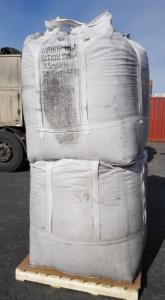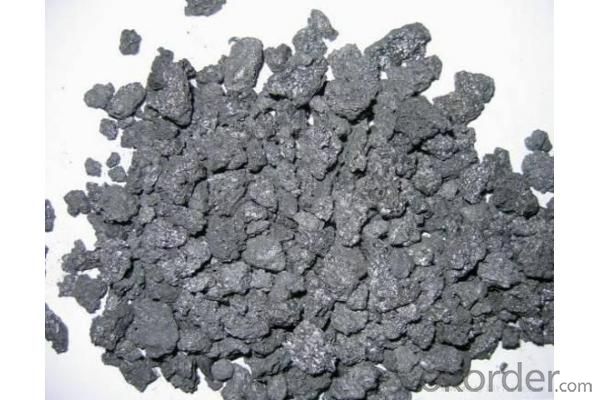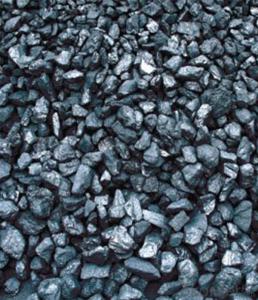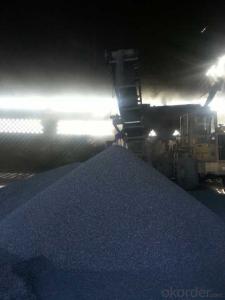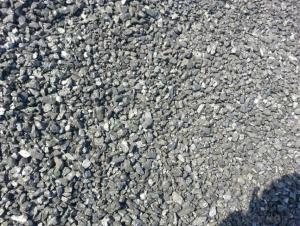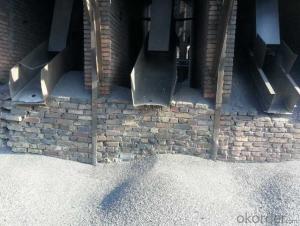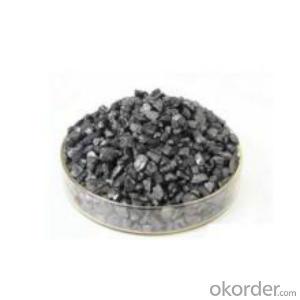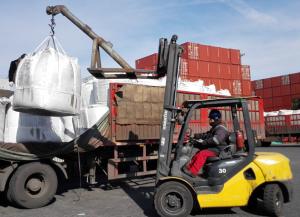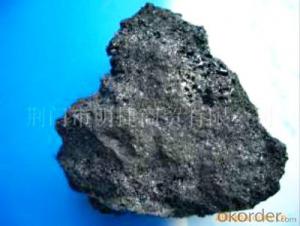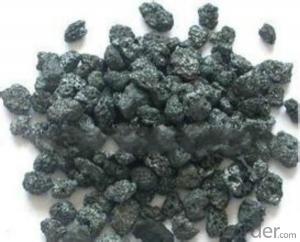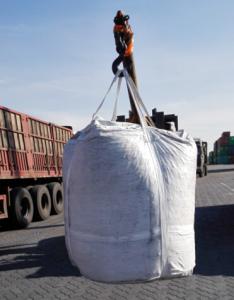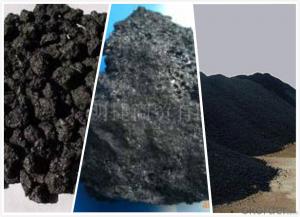Calcined Petroleum Coke FC98%-FC99% Originated in China
- Loading Port:
- Tianjin
- Payment Terms:
- TT or LC
- Min Order Qty:
- 20 m.t.
- Supply Capability:
- 1500 m.t./month
OKorder Service Pledge
OKorder Financial Service
You Might Also Like
Packaging & Delivery
| Packaging Detail: | 50kg/bag 100kg/bag 1000kg/bag Or according with client need to do |
| Delivery Detail: | 2 weeks |
Specifications
Calcined Petroleum Coke FC98%-FC99% Originated in China
Petroleum coke products can be divided into needle coke, sponge coke, projectile coke and coke breeze four kinds.
Calcined Petroleum Coke
F.C.: 98.5%MIN
ASH: 0.8% MAX
V.M.: 0.7%MAX
S:0.5%MAX
Moisture: 0.5%MAX
Structure
Calcined Petroleum Coke FC98%-FC99% Originated in China
Shape: granule
Dimensions: 0-1mm, 1-5mm, 1-6mm, 2-8mm, etc
Product Type: Carbon Additive
C Content (%): 98-99.5% MIN
Working Temperature: -
S Content (%): 0.5%-0.7%MAX
Ash Content (%): 0.7%MAX
Volatile:0.8%MAX
Moisture: 0.5% MAX
ADVANTAGE: low ash & sulfur
COLOR: Black
Feature
Calcined Petroleum Coke FC98%-FC99% Originated in China
Physics and chemistry performance:
Unit | Index | |||||
No.1 | No.2 | No.3 | ||||
Density | g/cm3 | 2.04 | 2.00 | 2.00 | ||
sulphur content | %≤ | 0.5 | 1.0 | 2.5 | ||
volatility | %≤ | 0.5 | 0.5 | 0.5 | ||
ash content | %≤ | 0.5 | 0.5 | 0.5 | ||
moisture | %≤ | 0.3 | 0.5 | 0.5 | ||
charcoal | %≤ | 98.5 | 98.0 | 98.0 | ||
Image
Calcined Petroleum Coke FC98%-FC99% Originated in China
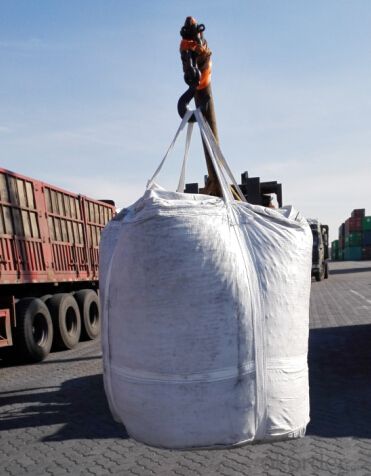
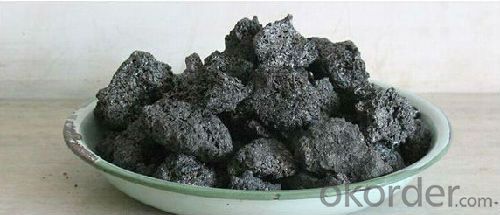
FAQ:
Calcined Petroleum Coke FC98%-FC99% Originated in China
How to classify calcined petroleum coke?
1) According to difference of sulfur content, can be divided into high sulfur coke (sulfur content more than 4%), sulphur in coke sulfur content (2% 4%) and low sulfur coke (sulfur content below 2%).
2) Petroleum coke products can be divided into needle coke, sponge coke, projectile coke and coke breeze four kinds:
3) Needle coke, has obvious needle-like structure and fiber texture, mainly used for steel-making in high power and ultra-high power graphite electrode. As a result of needle coke in sulfur content, ash content, volatile matter and true density and so on have strict quality requirements, so the production process of needle coke and raw materials have special requirements.
4) The sponge coke, high chemical reactivity, low content of impurities, mainly used in the aluminum industry and carbon industry.
5) Focal or spherical coke: the projectile shape is round, diameter 0.6-30 mm, usually from the production of high sulphur, high asphaltic residual oil, can only be used as industrial fuel power generation, cement etc.
6) Coke breeze: fluidized coking process, the fine particles (0.1- 0.4 mm) in diameter, high volatile, high expansion coefficient, cannot be directly used for electrode preparation and carbon industry.
Advantage:
Calcined Petroleum Coke FC98%-FC99% Originated in China
1. High quality and competitive price.
2. Timely delivery.
3. If any item you like. Please contact us.
Your sincere inquiries are typically answered within 24 hours.
- Q: What is the role of carbon in the formation of fossil fuels?
- Carbon plays a crucial role in the formation of fossil fuels. Fossil fuels, including coal, oil, and natural gas, are formed from the remains of ancient plants and organisms that lived millions of years ago. These ancient organisms contained a significant amount of carbon, which is the primary component of fossil fuels. The process of fossil fuel formation begins with the decomposition of organic matter. When plants and organisms die, their remains accumulate in an environment with limited oxygen, such as swamps, lakes, and ocean floors. Over time, these organic materials are buried under layers of sediment, subjecting them to immense pressure and heat. Under these extreme conditions, the organic matter undergoes a process called diagenesis, which involves the breakdown of complex organic molecules into simpler compounds. This process releases gases like methane and carbon dioxide. However, the carbon-rich compounds that resist decomposition become the building blocks of fossil fuels. Over millions of years, the pressure and heat continue to transform these organic remains. The carbon-rich compounds undergo a process called catagenesis, where they get progressively altered, forming hydrocarbon chains. This transformation leads to the formation of coal, oil, and natural gas, which are all composed primarily of carbon, hydrogen, and a few other elements. The carbon present in fossil fuels is responsible for their high energy content. When burned, fossil fuels release carbon dioxide and other greenhouse gases into the atmosphere, contributing to climate change. However, the role of carbon in the formation of fossil fuels is crucial as it provides a concentrated source of energy that has been vital for human civilization and industrial development.
- Q: Want advanced reinforcement, but I do not know where the high furnace rock carbon, looking for someone to guide...
- Mall. In fact, BUG can be card out! Inside the palace there is that BUG, but I personally think that no use, I used to strengthen the use of advanced carbon weapons on 12, even 3 did not become a storm, this is only the way to make money TX it
- Q: How does deforestation contribute to carbon dioxide levels in the atmosphere?
- Increased carbon dioxide levels in the atmosphere are significantly influenced by deforestation. Trees play a crucial role as natural carbon sinks, absorbing carbon dioxide through photosynthesis and storing it in their trunks, branches, and leaves. However, when forests are cleared or burned down for purposes like agriculture, logging, or urbanization, the stored carbon is released back into the atmosphere as carbon dioxide. The removal of trees directly diminishes the planet's ability to absorb carbon dioxide, resulting in an imbalance in the carbon cycle. Furthermore, deforestation disrupts the carbon cycle by hindering the process of photosynthesis, which is vital for converting carbon dioxide into oxygen and organic compounds. Additionally, deforestation indirectly contributes to increased carbon dioxide levels in the atmosphere through the decomposition of organic matter. When trees are cut down or burned, the stored carbon they contain is released as carbon dioxide, intensifying greenhouse gas emissions. Moreover, deforestation impacts the water cycle, leading to dryer conditions in affected areas. This causes soil to become arid, making it less suitable for plant growth and reducing the potential for carbon absorption through reforestation efforts. The cumulative effect of deforestation on carbon dioxide levels is significant. Studies indicate that deforestation accounts for approximately 10-15% of global carbon emissions, thus making it one of the leading contributors to climate change. The rise in atmospheric carbon dioxide levels, along with other greenhouse gases, contributes to the greenhouse effect, trapping heat in the atmosphere and causing global warming. To mitigate climate change and decrease carbon dioxide levels, it is crucial to address deforestation. Implementing sustainable forestry practices, promoting reforestation efforts, and protecting existing forests are essential steps in preserving carbon sinks and reducing greenhouse gas emissions.
- Q: How are carbon nanomaterials used in electronics?
- Due to their unique properties and versatility, carbon nanomaterials find widespread use in the field of electronics. A common application of these materials is in the creation of highly efficient and flexible conductive materials. Both carbon nanotubes (CNTs) and graphene, which fall under the category of carbon nanomaterials, possess remarkable electrical conductivity, making them ideal for the production of conductive components in electronic devices. CNTs are cylindrical structures comprised of rolled-up graphene sheets. They can be utilized as interconnects in integrated circuits, enhancing performance by reducing resistance and promoting heat dissipation. Furthermore, CNTs can be employed in transistors, facilitating faster and more efficient switching due to their high electron mobility. Their small size and flexibility render them suitable for the construction of transparent conductive films used in touchscreens and flexible electronics. On the other hand, graphene is a two-dimensional sheet composed of carbon atoms arranged in a hexagonal lattice. It is renowned for its exceptional electrical conductivity, high electron mobility, and excellent thermal conductivity. Materials based on graphene can function as electrodes in batteries and supercapacitors, thereby enhancing their energy storage capacity. Additionally, graphene transistors possess the potential to replace traditional silicon-based transistors, resulting in faster and more energy-efficient electronic devices. Furthermore, carbon nanomaterials, particularly CNTs, exhibit promise in the realm of nanoelectromechanical systems (NEMS). NEMS devices are exceedingly small and sensitive, enabling applications such as sensors, actuators, and resonators. CNT-based NEMS devices have displayed exceptional sensitivity and responsiveness, making them suitable for various sensing applications, including pressure, gas, and biological sensing. In conclusion, carbon nanomaterials play a vital role in the field of electronics by offering highly conductive and versatile materials for different components and applications. Their unique properties, such as excellent electrical and thermal conductivity, make them ideal for the production of faster, more efficient, and flexible electronic devices. As research and development in this field continue to advance, carbon nanomaterials are poised to revolutionize the electronics industry.
- Q: What are the industrial uses of diamonds?
- Diamonds have various industrial uses due to their exceptional hardness and thermal conductivity. They are commonly used as abrasives in cutting, grinding, and polishing tools for materials like glass, ceramics, and metals. Additionally, diamonds are utilized in the production of high-quality drill bits for drilling wells and mining operations. Their thermal conductivity makes them valuable in heat sink applications, such as in the manufacturing of computer chips and laser technology. Diamonds are also employed in the production of specialized lenses and windows for high-pressure research and industrial lasers.
- Q: What are the challenges of carbon capture and storage technology?
- One of the main challenges of carbon capture and storage technology is the high cost involved in implementing and maintaining the infrastructure. The capturing and storing of carbon dioxide emissions requires significant investment in equipment and facilities, making it financially burdensome for many industries. Additionally, the process of capturing carbon dioxide from flue gases can consume a considerable amount of energy, resulting in increased operational costs. Another challenge is the limited capacity for storing captured carbon dioxide. Finding suitable geological formations or reservoirs to safely store large quantities of carbon dioxide is a complex and time-consuming task. It requires thorough geological assessments and monitoring to ensure that the stored carbon dioxide will not leak back into the atmosphere or pose any environmental risks. Moreover, the transportation of captured carbon dioxide to storage sites can also be a logistical challenge. Developing a robust and efficient transportation infrastructure to move carbon dioxide from various emission sources to storage locations is crucial but can be difficult, especially in areas with limited existing infrastructure. Furthermore, there are concerns about the long-term security and permanence of stored carbon dioxide. It is essential to ensure that the stored carbon dioxide remains trapped underground indefinitely to prevent its release into the atmosphere. This requires continuous monitoring and verification processes to guarantee the integrity of the storage sites over extended periods. Lastly, public acceptance and regulatory frameworks pose significant challenges for carbon capture and storage technology. There may be public concerns about the safety and potential environmental impacts of storing large amounts of carbon dioxide underground. Establishing clear regulations and guidelines, as well as effective communication and public engagement, are essential to address these concerns and build trust in the technology.
- Q: The home wants to install electricity to warm the floor, the metal heating cable certainly won't use to have radiation, but is carbon system carbon fiber good or carbon crystal good?
- South Korea has a long history of electric heating, there is no domestic manufacturers have such technology! "Carbon crystal" is in the past two years, the domestic suddenly came out, it is estimated that dozens of homes!
- Q: How does carbon dioxide affect climate change?
- Carbon dioxide (CO2) is a greenhouse gas that plays a significant role in climate change. When released into the atmosphere through natural processes like volcanic eruptions or human activities such as burning fossil fuels, CO2 traps heat from the sun and prevents it from escaping back into space, leading to a phenomenon known as the greenhouse effect. The increased concentration of CO2 in the atmosphere due to human activities, primarily the burning of fossil fuels like coal, oil, and natural gas, has led to an imbalance in the natural carbon cycle. This imbalance has resulted in a rapid increase in global CO2 levels, contributing to the warming of the Earth's surface and the subsequent changes in climate patterns. Since the Industrial Revolution, the burning of fossil fuels has caused a significant rise in atmospheric CO2 levels, increasing the Earth's average temperature. This rise in temperature affects various aspects of the climate system, leading to a range of impacts. One of the most evident consequences of increased CO2 levels is the rise in global temperatures. This temperature increase leads to the melting of glaciers and polar ice, causing sea levels to rise. Rising sea levels pose a threat to coastal areas and low-lying islands, resulting in increased flooding, coastal erosion, and the potential displacement of communities. Furthermore, elevated CO2 levels contribute to more frequent and intense heatwaves, droughts, and wildfires in many regions. These extreme weather events can have detrimental effects on agriculture, water availability, and human health. Carbon dioxide also affects the balance of ecosystems by altering the growth patterns and distribution of plant and animal species. Changes in temperature and precipitation patterns, driven by increased CO2 levels, disrupt the delicate web of life, leading to the loss of biodiversity and the potential extinction of certain species. To mitigate the impacts of CO2 on climate change, reducing greenhouse gas emissions is crucial. Transitioning to renewable energy sources, improving energy efficiency, and adopting sustainable practices are some of the steps that can help reduce CO2 emissions and limit the extent of climate change. Additionally, efforts to restore and protect forests and other natural carbon sinks can help absorb and store CO2, mitigating its effects on the climate.
- Q: What kinds of carbon black paper do you have?
- Classification of weights:Carbon free carbon paper has 45g/m2CB paper, 47g/m2CF paper and 52g/m2CFB paper according to quantitative. Carbon free carbon paper is divided into 80 parts: 48, 50 and 80: 52: below: 47 and 2.55-60 grams for office reports, receipts, delivery orders, delivery lists, etc..Two. Classification of specifications:Carbon free carbon paper can be divided into web (rools) and paperboard (sheets) according to specifications. The width of the web can range from 160mm to 1940mm, and the size of the flat paper can range from 420mm*530mm to 1420mm*1420mm.
- Q: Wrought iron, steel, cast iron, cast iron, according to the content of the carbon? How many?
- According to the carbon content, but not all. The wrought iron should be called industrial pure iron, the carbon content is below 0.02%, the carbon content of steel at 0.02-2.11%, the carbon content of pig iron in about 2.5-4.3%, and the carbon content of iron in 2.11-4%.
Send your message to us
Calcined Petroleum Coke FC98%-FC99% Originated in China
- Loading Port:
- Tianjin
- Payment Terms:
- TT or LC
- Min Order Qty:
- 20 m.t.
- Supply Capability:
- 1500 m.t./month
OKorder Service Pledge
OKorder Financial Service
Similar products
Hot products
Hot Searches
Related keywords
